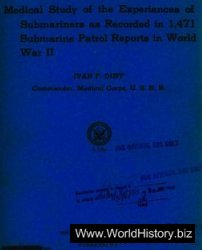The search for missing persons assumes that the individuals concerned are alive in the first instance and may be missing due to medical or psychological conditions as much as to disorientation, abduction, or murder. The shift of search from a living to a deceased target is a gradual one and also necessitates a shift in the techniques deployed. This paper is only concerned with searching for clandestine burials which can involve the deployment of a range of specific techniques and an equally wide range of expert personnel. Most of these searches are highly planned and coordinated, usually by a Police Search Adviser (POLSA). Searches initially commence with noninvasive methods in order to target specific areas, to eliminate others, and to define search boundaries. The information (intelligence) which underpins this process may include a range of factors: offender and geographical profiling, witness accounts, last sightings, database statistics derived from similar scenarios (including disposal patterning), and the suspect’s movements. Ordnance Survey, geological, and land use maps can be used to define access and feasibility of burial; aerial photographs may be commissioned, and appropriate areas defined. As in archaeology, aerial photography may be able to identify areas of disturbance from soil change, shadow, or crop mark although on a scale much smaller than most archaeological features observed from the air, and in concealed rather than open locations.
All searches require some starting point or location of interest. Without these any search is impracticable. Search is also about eliminating areas from the search, either because they are not considered feasible (e. g., open rocky ground), or because they have been searched without result. It is clear, therefore, that a search team is only likely to eliminate an area with a high degree of confidence. This level of confidence is only achieved by using a sequence of search techniques, including complementary techniques. No one ever wants to find out that a burial was subsequently discovered on an area that had been eliminated.
Once these ‘desk-top’ techniques have been concluded, target areas will be identified for more detailed attention. These areas may consist of straightforward tracts of land, individual gardens, or specific small points of interest identified from the air. Graves dug into the ground will invariably leave a trace, even years later. Ground disturbance is likely to have an effect on the surface vegetation, perhaps supporting stronger growth, different species, or presenting different flowering times, compared to the undisturbed surrounding ground. These are longer-term effects. In the shorter term, trampled vegetation and soil may be apparent, as will the local disposal of excess soil which is unable to fit back into the grave. There may also be a topographical effect in that eventual consolidation of the grave fill will cause a depression in the ground surface; this may later become exacerbated when the buried body collapses through the decay process. Both vegetational and topographical change may require skilled observation, usually by POLSAs, archaeologists, or dog handlers who are familiar in such skills. The ranked masses of members of the public, so often photographed ‘helping’ in many early enquiries, may unwittingly eliminate vulnerable evidence of this type.
The same effect of disturbance which can create vegetational and topographic change may also lead to the creation of a geophysical signature which differs from the surrounding, undisturbed ground. In effect, the search techniques used so far have been focused on identifying the disturbance caused by the grave, rather than the body lying within the grave. Archaeological geophysics (as opposed to geological or engineering geophysics) is particularly suited to work of this kind as it shares the same requirements and sensitivity for identifying small shallow subsurface targets. It does, however, require there to be a reasonable ‘background’ of nondisturbed ground or of consistent geology in order for the grave to be picked up as being anomalous within that background. Even in wide open areas geophysical techniques are pushed to their limits to detect grave-size targets, and this may become virtually impossible in many typical search environments, notably rear gardens which display various types of surface, and are overgrown and cluttered with material, both surface and buried, which may interfere with the methodology.
Of the three main methods used in archaeology, resistivity and ground-penetrating radar (GPR) are probably the most effective in forensic environments. Magnetometry, which is highly sensitive to local magnetic and ferrous effects, has been found to be less useful, if only in view of the background ‘noise’ present in many of the locations targeted (above). Resistivity is particularly useful in open landscapes such as lawns or areas of turned soil but is likely to require data processing in order to enhance any anomalies detected. GPR, on the other hand, is better in confined spaces and has the ability to detect through dense surfaces. Thus, in contexts where patios, driveways, or swimming pools become targets of search, GPR is a helpful technique in being able to minimize heavy reinstatement costs. It also has the advantage of showing anomalies in ‘real time’ and allows targeting of specific features as the survey progresses. However, there are now several software packages that allow all geophysics techniques to be processed and filtered as well as being converted into 3-D images which allow the operator to maximize the data available.
It is important to stress that all geophysical survey methods have advantages and limitations. Electrical, magnetic, and electromagnetic techniques all respond to, or are affected by, different phenomena and the various systems are best used to complement each other rather than being used as individual options. For example, a grave in a particular soil environment might not be detected using resistivity, but may be picked up using magnetometry. Experimentation has emphasized the difficulty in detecting graves using geophysics, particularly soon after burial has taken place. Equally, it can take a skilled and experienced operator to recognize the display effects of a burial evident in a radar scan depending on time since disposal. A key element here is the decay dynamic of the buried victim and its effect on detection methods. Archaeological features tend to be inert, whereas a recently buried victim will undergo a process of decay which ultimately (under normal circumstances) will culminate in skeletonization. The speed and extent of this decay process and resulting effects (taphonomics) depends on numerous factors such as depth of burial, wrapping, wetness, temperature, soil environment, oxygen, bacteria, etc., and these, in their turn, may alter the efficacy of the various detection techniques available. Geophysical survey normally operates using 20 m X 20 m grids, allowing up to 10 grids to be covered in a working day; resistance and magnetometer readings are usually taken at 0.5 m intervals in order to ensure that a grave is adequately sampled.
The detection of likely targets either by geophysics, from the air, by field-craft, evidence of scavenging, or by observation of disturbed ground can then be tested by ‘ground truthing’. This can entail trial trenching or, less invasively, the use of a cadaver dog. These dogs are trained to detect the scent of decaying human flesh but ideally require the ground to be ‘vented’ first. This involves the handler piercing the ground in the suspect area often to a depth of around 0.6 m with a narrow metal probe in order to allow any scent to rise to the surface. Often the ground is vented with a series of holes, or in a line which enables the handler to lead the dog into, and across, the suspect area downwind. If the dog responds in a particular place, further action can be taken; if it does not, then the Police Senior Investigating Officer (SIO) will have to decide the next step. One option available to the SIO is to become more invasive in order to be confident that no remains have been buried. For example, in a garden where a number of targets have been found by geophysics but have not been responded to by the dog, a machine might be employed to strip away the topsoil. Used skilfully, machines have a valuable role to play in work of this kind. The use of a wide (toothless) ditching bucket can clear a garden down to undisturbed substrates in a matter of a few hours, allowing any disturbance to be investigated, usually by half-section. Given their destructive nature, machines are best used as a secondary rather than as a primary approach. Used primarily, they may destroy much evidence if any burial is present; used secondarily, they can achieve elimination of an area. Their role in search depends significantly on the intelligence that an SIO may have regarding a given location.
Probing can also be used, although this can have damaging effects on a buried victim. Used systematically, it may be possible to identify softer (disturbed) substrates from harder (undisturbed) substrates. This method can also be extended to the use of a corer, which will allow a column of earth to be removed in order to assess the nature of buried deposits. Both methods have destructive implications.
Any features discovered, by dog or other methods, can be excavated by hand, usually by half-section. This allows the excavator to identify the size, depth, and nature of the feature as rapidly as possible (there may be many features requiring investigation), as well as showing in section how the feature was infilled. If the feature turns out to be a grave the nature of the infilling may be significant. During the half-section, spoil will be recovered either by contexts or (more likely) in arbitrary spits and retained, in case the feature is found to contain human remains. In such an eventuality the ‘search’ process will have already interfaced with the recovery exercise: the likely extent and depth of the grave will be known, the nature of the infill identified, and the taphonomics established. Taphonomy is a relatively new area of study which can affect both search and recovery, and has been the subject of extensive focus. These factors will provide valuable information and guidance for the remainder of the recovery process. More significantly, both loss of evidence and the opportunity for contamination to have occurred will have been minimized.
Most modern search exercises will be logged by the senior POLSA and produced in report form. This log should include times, dates, areas, methods, decisions made, and locations eliminated. In the event that no victim has been recovered, it provides an invaluable record for future ‘cold case’ reviews in which new technologies and methods might be applied. Many older cases which now come under review have no such log, or even accurate record of where any ‘digging’ took place, and may need to be started from scratch (see Remote Sensing Approaches: Aerial; Geophysical).




 World History
World History









